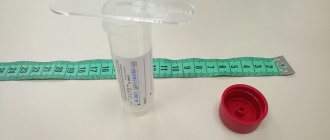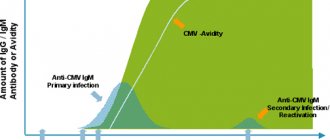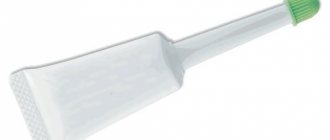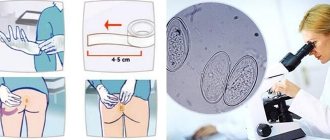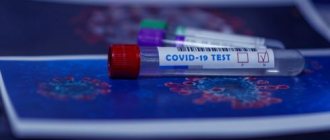Coprogram is a comprehensive analysis of feces, which allows you to evaluate the functioning of the digestive system as a whole, and the functionality of each organ separately. In order for the research results to be accurate, it is necessary to adhere to certain rules for the preparation, collection and storage of material.
What is a coprogram?
Coprogram is a method of laboratory examination of feces, which is prescribed to identify pathologies of the digestive system. The specialist conducts macroscopic, microscopic, chemical and physical analysis of feces, after which he makes a detailed description of the composition of feces.
What a general stool analysis shows:
- dysfunction of the pancreas, intestines, stomach;
- the presence of foci of inflammation in the gastrointestinal tract and their localization;
- disruptions in the process of digestion, movement of feces, and absorption of nutrients;
- dysbacteriosis;
- presence of parasites;
- colitis.
You can make a stool coprogram in a regular clinic for free, but to get a more accurate and detailed result, it is better to contact private laboratories, the average price is 370–420 rubles.
Types of blood tests
Clinical. Determines the main parameters: the number of red blood cells, platelets, hemoglobin level, leukocyte formula, ESR. There can be more than 25 indicators in total. Method of delivery: from a vein or from a finger (the interpretation of the results varies depending on this). Allows you to identify signs of inflammation, allergic reaction, infection, exhaustion, etc. This is a basic test that can be used to make a diagnosis, assess the patient’s condition, and dynamics in the treatment of the disease.
Biochemical. Evaluates the content of bilirubin, proteins, amino acids, glucose, other elements, and some hormones in the blood. The list of indicators may vary depending on the objectives of the study. The test is used to diagnose diseases of the endocrine, cardiovascular system, kidneys, gastrointestinal tract, OPD, etc. Blood for biochemical analysis is taken from a vein.
Other types of tests:
- cytogenetic: detect structural and quantitative disorders of the chromosome set;
- immunological: assesses the status of the immune system, is used in the diagnosis of HIV, some sexually transmitted diseases, hepatitis, toxoplasmosis, rubella, etc. The results may indicate autoimmune, infectious diseases, signs of oncology. Must be prescribed in preparation for transplantation or surgery;
- hormonal: check the level of hormones of the pituitary gland, thyroid gland, adrenal glands. The tests are used in the diagnosis of endocrine system disorders;
- serological: detect infectious diseases, assess their stage, show the content of certain antibodies in the blood.
Indications for taking a coprogram
A stool test should be taken as part of an annual preventive examination in order to recognize problems with the digestive tract in time and begin treatment.
When is scatology prescribed:
- inflammation of the digestive system in acute and chronic form;
- hemorrhoids, fissures in the anus, chronic constipation;
- cirrhosis of the liver;
- irritable bowel syndrome;
- neoplasms in the gastrointestinal tract;
- poisoning;
- suspicion of helminthic infestation, amoebic dysentery;
- assessment of the effectiveness of drug treatment;
- before conducting instrumental diagnostics of the gastrointestinal tract and surgical interventions.
Children are prescribed a stool test for colic, if there is a suspicion of intestinal infections, inflammatory processes, cystic fibrosis, lactose intolerance, dysbacteriosis, or infection with worms.
Diseases
The list of pathologies that are detected through fecal analysis is quite wide. Based on the results of the study, the following primary diagnoses can be established.
Table 1. Diseases that can be detected through fecal testing
| Disease | Symptoms |
| Cholelithiasis. | The stool takes on a beige tint, belching of bile appears, discomfort in the liver area and frequent attacks of nausea. |
| Ulcer of the stomach and duodenum. | Injury to the mucous membrane leads to the formation of rich black feces. |
| Dysentery, hemorrhoids and ulcerative colitis. | Splotches of bloody discharge. |
| Chronic pancreatitis. | Changes occurring in the intestinal microflora are fraught with the formation of a large amount of undigested food in the stool. Feces have a foul odor associated with rotting processes. |
| Dysbacteriosis. | The stool becomes liquid and smells unpleasant. |
| Inflammatory processes of the intestines and colitis. | These ailments are accompanied by the formation of mucus in the feces. |
How to donate stool correctly
For diagnostic results to be reliable, several simple conditions must be met.
Rules for preparing for coprogram:
- 3-5 days before the examination, stop eating meat, tomatoes, beets, green vegetables, red fish - when testing for occult blood, they can become the culprits of a false positive result.
- The diet should include dairy products, mashed potatoes, lean meat, kazhi, boiled eggs, and porridge.
- A week before the test, you need to stop taking activated carbon, preparations based on bismuth, iron, antibacterial, anti-inflammatory drugs, antacids - they change the color of stool. You cannot take laxatives, use rectal suppositories, or do enemas.
- Sometimes the doctor prescribes a special diet, which details the daily amount of proteins, carbohydrates, and lipids - this is necessary in order to maximally load the digestive system, which will help detect even the slightest malfunction in its functioning.
- A coprogram can be performed no earlier than 5–6 days after an X-ray with barium, colonoscopy, or cleansing procedures.
- You cannot donate stool during menstruation or bleeding hemorrhoids.
Any deviation from the rules will distort the results of the coprogram.
Normal values
| Index | Meaning |
| Macroscopic examination | |
| Consistency | Dense |
| Form | Decorated |
| Color | Brown |
| Smell | Fecal, unsharp |
| pH | 6 – 8 |
| Slime | Absent |
| Leftover undigested food | None |
| Chemical research | |
| Reaction to occult blood | Negative |
| Reaction to protein | Negative |
| Reaction to stercobilin | Positive |
| Reaction to bilirubin | Negative |
| Microscopic examination | |
| Muscle fibers with striations | None |
| Muscle fibers without striations | units in the preparation |
| Connective tissue | Absent |
| Fat neutral | Absent |
| Fatty acid | Absent |
| Fatty acid salts | insignificant amount |
| Digested plant fiber | units in the preparation |
| Undigested plant fiber | units in the preparation |
| Intracellular starch | Absent |
| Extracellular starch | Absent |
| Iodophilic flora is normal | units in the preparation |
| Pathological iodophilic flora | None |
| Crystals | None |
| Slime | None |
| Columnar epithelium | None |
| Epithelium is flat | None |
| Leukocytes | None |
| Red blood cells | None |
| Protozoa | None |
| Worm eggs | None |
| Yeast mushrooms | None |
How to collect stool
It is better to collect stool from an adult and a child in the morning, immediately after the morning toilet, and try to deliver it to the laboratory as quickly as possible. You need to collect material from different parts of the feces, put them in sterile containers, or special disposable plastic containers, which can be purchased at the pharmacy. Evacuation should be natural; the use of laxatives, much less enemas, is prohibited.
In infants, it is not recommended to collect feces from the diaper; it is better to use a disposable diaper or medical oilcloth if the child has loose stools.
An older child needs to prepare a potty; first wash it with laundry soap or soda.
Important! When collecting material, you need to ensure that there is no urine in the stool.
How much feces do you need?
To carry out the analysis, you need to bring 15–20 g of material to the laboratory, which is approximately equal to 1 tsp. – this amount is quite enough to identify all the main indicators.
Is it possible to collect stool samples in the evening?
It is better to use a morning portion of feces for analysis, but if you are not sure that defecation will occur after waking up, you can collect the material in the evening; it should be stored in the refrigerator for no more than 10–12 hours, the container should be hermetically sealed.
Protozoa and helminth eggs
Testing for protozoa and helminth eggs is recommended for frequently ill children and people who have animals at home.
You can only hope for an accurate result if all preparation conditions are met. It is not advisable to carry out hygiene procedures before analysis. After the procedure, the sample must be submitted for examination within 12 hours.
Modern laboratories perform the test on the day of delivery; in exceptional cases, the result becomes known only the next day. The analysis is valid for 10 days.
Decoding the results of scatological research
When the results are ready, the person will receive a form indicating normal indicators and the results obtained from the study of the material. It is better to consult a doctor for a decoding, since even a deviation from the norm of several indicators does not always indicate the presence of pathologies.
Normally, an adult's feces should be uniformly brown in color, dense, and have a characteristic odor.
The feces of a healthy person are free of foreign impurities, food debris, protozoa and parasite eggs. The presence of undigested fiber in the stool indicates low acidity of gastric juice, the presence of blood and pus indicates serious gastrointestinal pathologies.
Culture for microflora and sensitivity to antibiotics
The study is carried out to assess the qualitative and/or quantitative composition of fecal microflora. It is also used to identify opportunistic flora and its resistance to antibiotics.
Conditionally pathogenic flora is present in the body of all people. Under the influence of certain factors, microorganisms begin to multiply uncontrollably, provoking the development of diseases. The most common representatives of this group are: Staphylococcus aureus, Klebsiella, Citrobacter, Proteus, yeast-like fungi, Serration.
The material is collected before starting antibiotics. The use of suppositories, oils and laxatives should be avoided. Biomaterial is collected only under the condition of spontaneous emptying.
If the number of opportunistic microorganisms during diagnosis is determined to be within normal limits, antibiotic sensitivity testing is not carried out. This is considered inappropriate.
Bowel gases
Gases are a natural byproduct of food digestion and fermentation as it moves through the gastrointestinal tract. An adult excretes about 0.2-0.5 liters of gas per day.
Gas formation occurs during the digestion process in the stomach due to the activity of microorganisms that inhabit the intestines. They decompose nutrients, releasing hydrogen sulfide, methane, carbon dioxide and hydrogen.
A normal increase in the amount of gases is considered:
- when consumed in large quantities of carbohydrates and fiber;
- swallowing large amounts of air while drinking and eating;
- consuming foods that stimulate fermentation processes, as well as dairy products for lactose intolerance.
An increase in the amount of gases can be observed with the following pathologies.
- Intestinal dysbiosis.
- Celiac disease.
- Irritable bowel syndrome.
- Malabsorption.
- Enzyme deficiency of the pancreas.
- Chronic liver diseases: hepatitis, cholecystitis, cirrhosis.
- Chronic intestinal diseases (enteritis, colitis).
- Peptic ulcer of the stomach and duodenum, gastritis.
Up to contents
